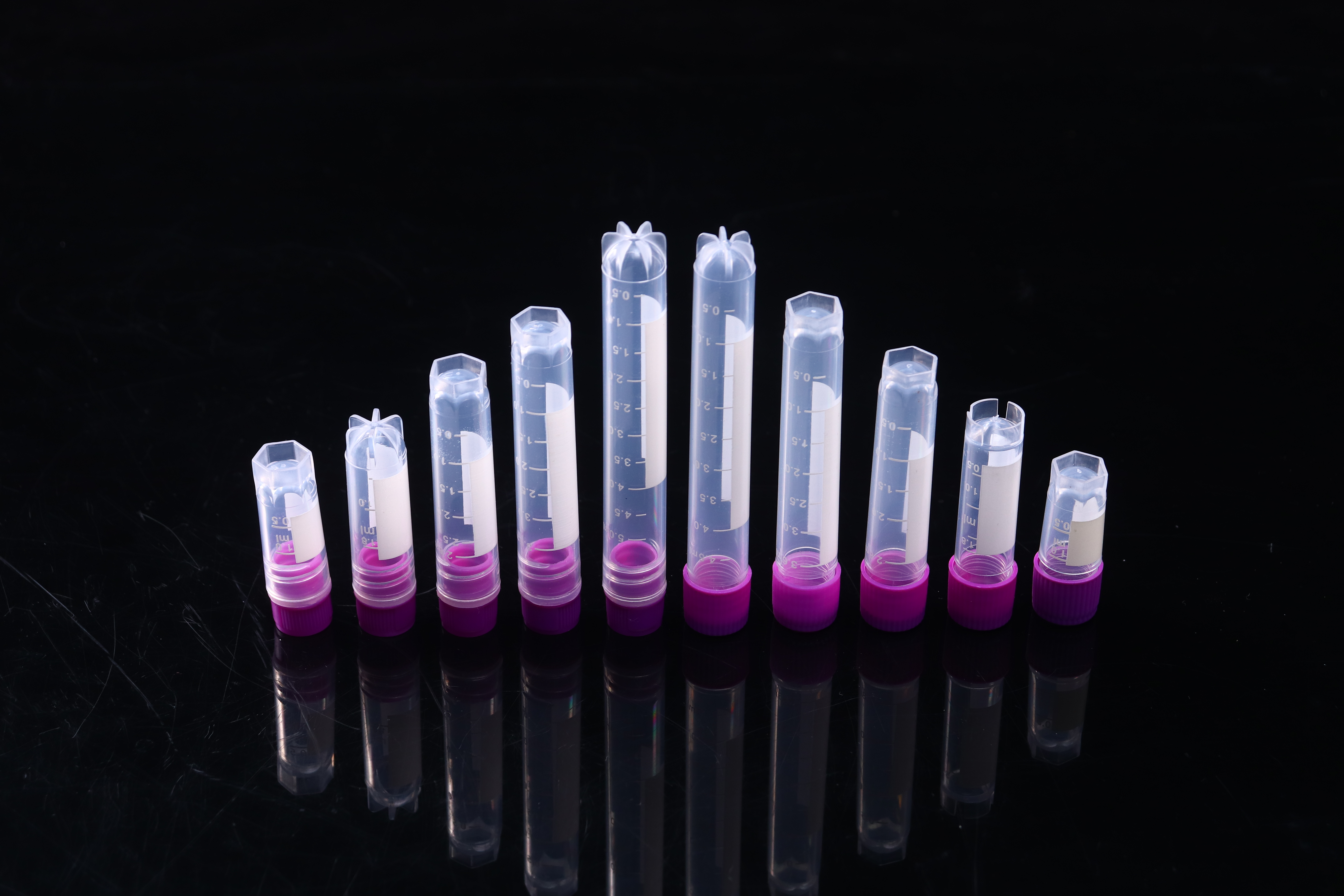How to select an excellent “Freezing tube”?
An easy to use cryo tube can not only meet the experimental requirements, but also reduce the possibility of experimental accidents to a certain extent
Today we will use 3 methods to select the cryo tube.
The first step: the material
As we all know, freezing tubes are mainly used for low-temperature transportation and storage of tissue or cell samples, often in biological research and medical fields.
Because the freezing tube is in direct contact with the sample, the first step is to select the right material to avoid contamination of the sample.
Generally,freezing tubes are made of materials without cytotoxicity. The materials commonly used in laboratories are plastic and glass. However, because glass cryotubes cannot be used on high-speed or overspeed centrifuges, plastic cryotubes are often used.
There are so many plastic materials, how to choose?
Five words, “polypropylene material” Choose with confidence!
Polypropylene has excellent chemical and temperature stability. Under the gas state of liquid nitrogen, it can withstand low temperature to minus 187 ℃.
In addition, if the requirements for sample safety are relatively high, non mutagenic materials and pyrogen free VID compatible tubes can be selected. And please do not open it before use. If it has already been opened, it must be sterilized before use!
The second step: Composition
The freezing tube is generally composed of a tube cap and a tube body, which is divided into an internal cap freezing tube and an external cap freezing tube. If the sample is to be stored in liquid nitrogen phase, use an internal rotation freezing tube with a silica gel pad; If the sample is to be stored in mechanical equipment, such as refrigerator, the external rotation freezing tube is used, generally without silica gel pad.
In one word:
On the whole, the low temperature resistance of the inner spinning cryopreservation tube is better than that of the outer spinning freezing tube, which should be selected according to the actual needs.
The third step: specifications
According to the experimental requirements, the cryopreservation tubes generally have specifications of 0.5ml, 1.0ml, 2.0ml, 5ml, etc.
The commonly used biological sample freezing tube is generally 2ml in size. It should be noted that the volume of the sample generally cannot exceed two-thirds of the volume of the freezing tube. Therefore, the appropriate freezing tube should be selected according to the size of the frozen sample
In addition, there are differences between double layer and non double layer, can be established and can not be established, domestic and imported, and the price. These are the factors that need to be considered when selecting the freezing tube.
Post time: Dec-16-2022


